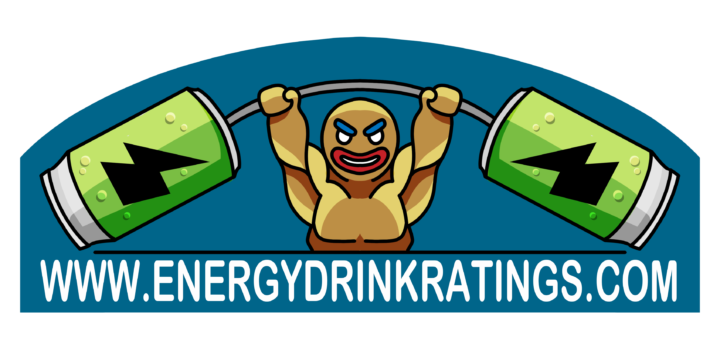
Energy drinks have become an integral part of contemporary consumer culture, offering a convenient way to boost energy levels, enhance focus, and support physical performance. From bustling city centers to remote corners of the globe, these beverages cater to a diverse range of consumers seeking a functional pick-me-up. This comprehensive guide delves into some of the leading energy drink brands that have captured global markets with their unique formulations, bold marketing strategies, and widespread appeal.
Red Bull
Red Bull stands as the vanguard of the energy drink industry, originating in Austria in the 1980s. Recognized for its distinctive slim can and potent blend of caffeine, taurine, and B-vitamins, Red Bull quickly distinguished itself in a competitive beverage market. Red Bull’s founder, Dietrich Mateschitz, didn’t just create a drink; he created a culture.
From the very beginning, Red Bull’s marketing was all about creating an image of adventure, extreme sports, and high energy. The brand’s slogan, “Red Bull gives you wings,” encapsulates this ethos perfectly. Red Bull isn’t just about quenching your thirst; it’s about enabling you to achieve more, push your limits, and live life to the fullest.
One of Red Bull’s most brilliant moves was its early investment in extreme sports. The brand sponsors events that range from cliff diving and BMX racing to surfing and Formula 1. By associating itself with the adrenaline rush of these high-octane sports, Red Bull positioned itself as the drink of choice for thrill-seekers and athletes. The brand doesn’t just sponsor these events; it often creates and owns them, ensuring that the Red Bull name is synonymous with excitement and daring.
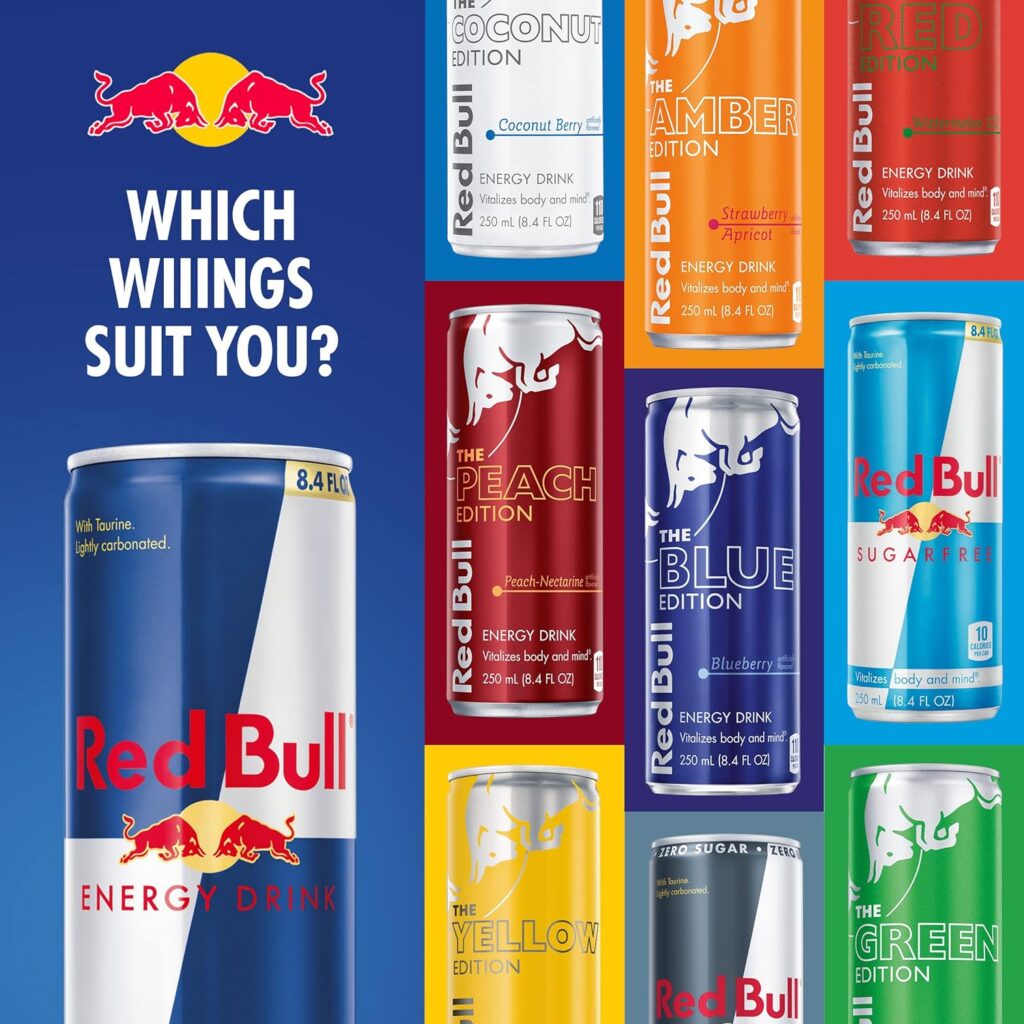
Red Bull’s media house, Red Bull Media Network, produces high-quality content that showcases these events, along with documentaries, web series, and films that further embed the brand into the lifestyle of its target audience. This approach turns consumers into fans and fans into loyal customers, all while creating an endless stream of engaging content that keeps Red Bull at the forefront of their minds.
Red Bull’s marketing genius doesn’t stop at sports. The brand is also known for its audacious stunts and viral marketing campaigns. Perhaps the most famous of these is the Red Bull Stratos project, where Austrian skydiver Felix Baumgartner jumped from a helium balloon in the stratosphere, breaking the sound barrier as he freefell back to Earth. This event was watched by millions live on YouTube, breaking records and setting a new benchmark for what branded content could achieve.
Red Bull has also expertly tapped into youth culture. The brand sponsors music festivals, gaming tournaments, and cultural events that appeal to younger demographics. By being present in these spaces, Red Bull ensures that it stays relevant to new generations. The Red Bull Music Academy, for instance, nurtures emerging talent and supports innovative music projects, fostering a connection with creative communities.
Beyond its marketing prowess, Red Bull maintains a reputation for high product quality and meticulous consumer engagement. Available in over 171 countries, Red Bull appeals to a broad demographic spanning athletes, students, and professionals seeking an extra boost of energy and mental acuity.
Monster Energy
Since its launch in 2002 by Hansen Natural Company (now Monster Beverage Corporation), Monster Energy has taken the beverage world by storm with its bold flavors, aggressive marketing, and distinct claw-mark logo. If Red Bull is the sophisticated athlete of energy drinks, Monster Energy is the rebellious rock star, shaking up the market with a fearless attitude and an untamed spirit.
Monster Energy’s strategy is simple yet powerful: align the brand with the hardcore, the extreme, and the unapologetically daring. The brand doesn’t just market a drink; it sells a lifestyle that resonates with those who live life on the edge.
From the beginning, Monster Energy dived headfirst into the world of extreme sports, sponsoring a myriad of events and athletes in motocross, BMX, skateboarding, snowboarding, and more. The brand’s partnership with these high-power sports wasn’t just about slapping a logo on a board; it was about immersing itself in the culture and becoming an integral part of the community. Monster’s sponsorship deals aren’t just financial transactions; they are collaborations that help define the very essence of extreme sports.
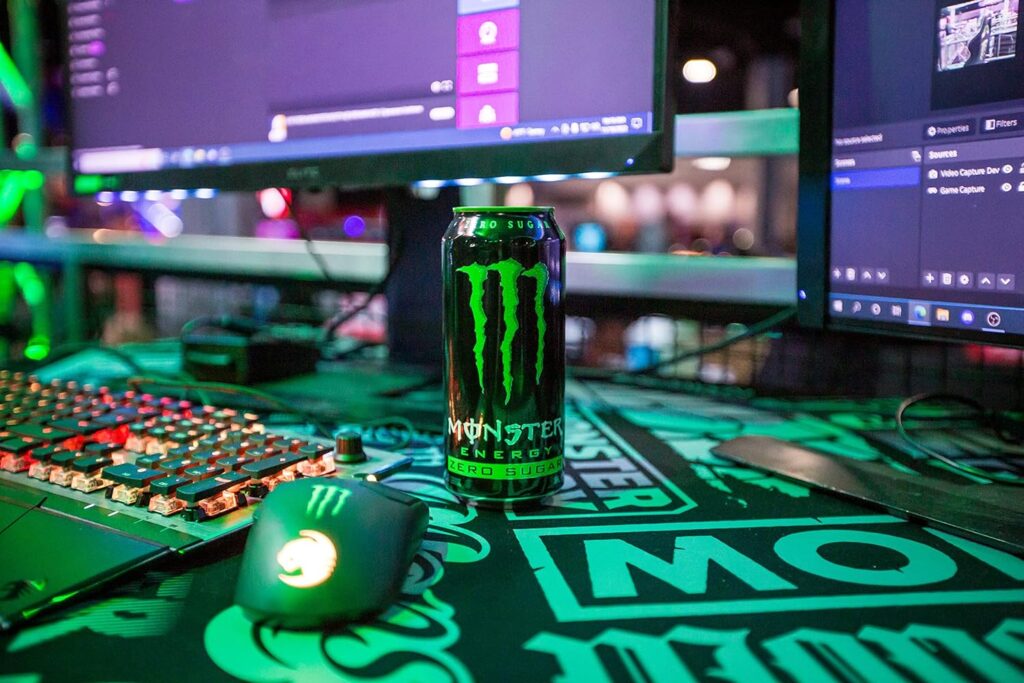
Monster Energy didn’t stop at sports. It also carved a niche in the music industry, particularly within the realms of rock, metal, and punk. The brand sponsors music festivals, concerts, and individual artists, seamlessly blending the electrifying energy of its drinks with the pulsating beats of live music. The Monster Energy Outbreak Tour, for instance, showcases emerging artists, giving fans a raw and unfiltered taste of the next big thing in music. This fusion of energy drinks and music festivals has made Monster a staple among concert-goers, reinforcing its image as the drink of choice for the audacious and adventurous.
Monster Energy knows how to grab attention with its marketing. The brand’s campaigns are blatantly bold, often walking the fine line between edgy and controversial. Monster doesn’t shy away from in-your-face advertising, using guerrilla marketing tactics and viral campaigns to make a splash. Whether it’s the wild antics of sponsored athletes or the brand’s presence at extreme sports events and music festivals, Monster ensures its image is always larger than life.
One of the standout aspects of Monster’s marketing is its grassroots approach. The brand invests heavily in creating a strong presence at local events and in communities, fostering a loyal following from the ground up. Monster girls, the brand’s iconic ambassadors, are a familiar sight at events, engaging with fans and amplifying the brand’s high-energy image.
Monster’s branding extends beyond the can. The brand’s merchandise, from hats and hoodies to decals and accessories, allows fans to showcase their loyalty and align themselves with Monster’s daring persona. This lifestyle branding ensures that Monster is omnipresent in the lives of its consumers, reinforcing the brand’s image at every turn.
V Energy
V Energy, an iconic brand hailing from the Land Down Under, has carved out a niche for itself in the competitive world of energy drinks with its unique blend of vibrant flavors and an unmistakable sense of fun. Launched in 1997 by Frucor Beverages, V Energy quickly became the go-to drink for Aussies and Kiwis looking for a reliable pick-me-up. Its electric green hue, distinctive taste, and courageous marketing campaigns have ensured that V Energy isn’t just a drink—it’s an experience.
V Energy’s success can be attributed to its localized marketing strategies and keen understanding of regional preferences. The brand’s commitment to innovation is evident in its product range, which includes V Energy Sugar-Free and V Energy Focus, appealing to health-conscious consumers while maintaining its reputation for taste and effectiveness.
V Energy was born out of a desire to create an energy drink that resonated with the young, active, and dynamic lifestyle of Australia and New Zealand. From the start, V Energy aimed to differentiate itself from the competition by offering a flavor profile that was both refreshing and energizing. The original V Energy drink, with its guarana extract and caffeine kick, became an instant hit, appealing to those seeking a quick energy boost without compromising on taste.
V Energy’s marketing strategy is as vibrant and lively as the drink itself. The brand has always embraced a playful and irreverent tone, making it a favorite among younger consumers. V Energy’s advertisements are known for their humor, creativity, and sometimes cheeky nature, ensuring that the brand remains memorable and relatable.
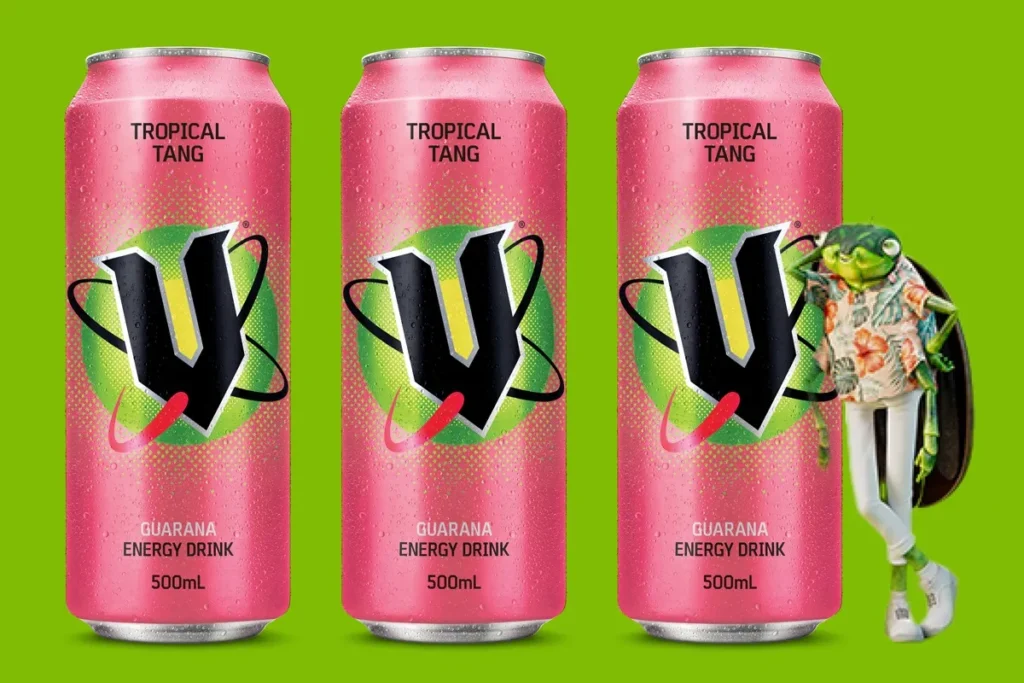
One of V Energy’s most successful campaigns was the “V for Vitality” series, which highlighted the drink’s energizing properties with a humorous twist. These ads often featured ordinary people finding extraordinary energy to tackle their daily challenges, all thanks to V Energy. This relatable yet exaggerated portrayal of energy and vitality struck a chord with consumers.
In recent years, V Energy has taken significant steps towards sustainability and social responsibility. The brand has committed to reducing its environmental footprint through initiatives like sustainable sourcing of ingredients, reducing packaging waste, and improving energy efficiency in production processes. V Energy’s move towards more sustainable practices reflects its understanding of the growing consumer demand for environmentally responsible products.
Additionally, V Energy has been involved in various community initiatives, supporting local causes and events that align with its brand values. By giving back to the community and investing in sustainability, V Energy not only enhances its brand image but also builds a deeper connection with its consumers who value ethical and responsible business practices.
Rockstar Energy
Launched in 2001 by Russell Weiner, Rockstar was built on the idea of providing an energy boost for those who lead active and adventurous lifestyles. With its extensive range of flavors and aggressive marketing strategies, Rockstar Energy has become a staple in the energy drink market, appealing to a diverse demographic that craves both performance and excitement.
Rockstar Energy’s marketing strategy is all about embracing a high-octane, adventurous lifestyle. The brand’s slogan, “Party Like a Rockstar,” encapsulates its philosophy of living life to the fullest. More similar to Monster Energy than Redbull, this brand is going after a specific target audience.
Rockstar’s advertising campaigns are bold and dynamic, often featuring extreme sports, music festivals, and high-energy events. The brand’s advertisements are designed to be visually striking and emotionally engaging, using high-impact imagery and thrilling scenarios to capture the imagination of consumers. Whether it’s a skateboarder performing a daring trick or a DJ energizing a massive crowd, Rockstar’s marketing consistently emphasizes the exhilarating experiences that the brand embodies.

Rockstar Energy’s presence in the world of motorsports is particularly noteworthy. The brand sponsors numerous racing teams and events, including the Rockstar Energy Husqvarna Factory Racing team and the Lucas Oil Off Road Racing Series. By supporting athletes and teams that embody the spirit of competition and adventure, Rockstar emphasizes its image as the go-to drink for those who push the limits.
One of Rockstar’s notable innovations is its line of performance energy drinks. These drinks are formulated with additional ingredients like branched-chain amino acids (BCAAs), electrolytes, and vitamins to support physical performance and recovery. Products like Rockstar Recovery and Rockstar Xdurance are popular among athletes and fitness enthusiasts who require more than just a caffeine boost.
Rockstar’s willingness to experiment with new flavors and ingredients has kept the brand relevant in a fast-evolving market. Seasonal and limited-edition flavors generate excitement and anticipation, ensuring that consumers always have something new to look forward to.
While Rockstar Energy was primarily focused on the North American market, the brand has successfully extended its reach to international markets. Today, Rockstar is available in more than 30 countries, including key markets in Europe, Asia, and South America. This global presence is supported by localized marketing strategies that resonate with the unique preferences and cultures of different regions.
Regional Favorites and Emerging Players
While global brands dominate the energy drink market, regional favorites continue to thrive, each offering a unique appeal and market niche. In Europe, brands like Burn and Relentless have gained popularity for their emphasis on taste and functionality, catering to diverse consumer preferences. Burn, for instance, is known for its sleek design and sponsorship of extreme sports events, appealing to a millennial and Gen Z demographic seeking adventure and excitement. Relentless, on the other hand, focuses on delivering long-lasting energy with a variety of flavors that resonate with the European palate.
In Asia, energy drink consumption is deeply ingrained in cultural practices, with brands such as M-150 in Thailand and Lipovitan in Japan commanding significant market share. M-150, with its distinctive red bottle and potent herbal ingredients, is favored for its ability to provide rapid energy and mental alertness, making it a staple among Thai consumers, especially during busy workdays or social gatherings. Lipovitan, a pioneer in the Japanese energy drink market, offers a range of products tailored to different consumer needs, from everyday refreshment to intense physical performance enhancement.
In Latin America, brands like Guaraná Antarctica in Brazil, and Speed in Mexico have captured local markets with their refreshing flavors and natural ingredients. Guaraná Antarctica, infused with guaraná berry extract, is celebrated for its distinctive taste and cultural significance in Brazil, where guaraná is revered for its stimulating properties and cultural heritage. Speed, on the other hand, stands out in Mexico for its audacious marketing campaigns and sponsorship of sporting events, targeting consumers seeking a reliable energy boost.
1st Phorm in America and Prime Energy are both growing at a rapid rate as well. To check out more popular brands look at our “rankings” page. These brands are all growing fast enough to need to be listed on our site.
Consumer Trends and Future Outlook
The energy drink market is volatile and ever changing due to evolving consumer preferences. As health-consciousness grows, there is a rising demand for energy drinks formulated with natural ingredients, reduced sugar content, and additional functional benefits beyond caffeine stimulation. Brands are sprinting to respond to these trends by introducing organic formulations, adaptogens, and vitamins aimed at enhancing mental clarity, physical performance, and overall well-being.
Technological advancements in beverage formulation and packaging are also shaping the future of the energy drink industry. Innovations in flavor profiles, sustainability practices, and product transparency are expected to drive growth and consumer loyalty in the coming years. Brands that can adapt to these changes while maintaining their core identity and commitment to quality are likely to lead the charge in shaping the next generation of energy drinks.
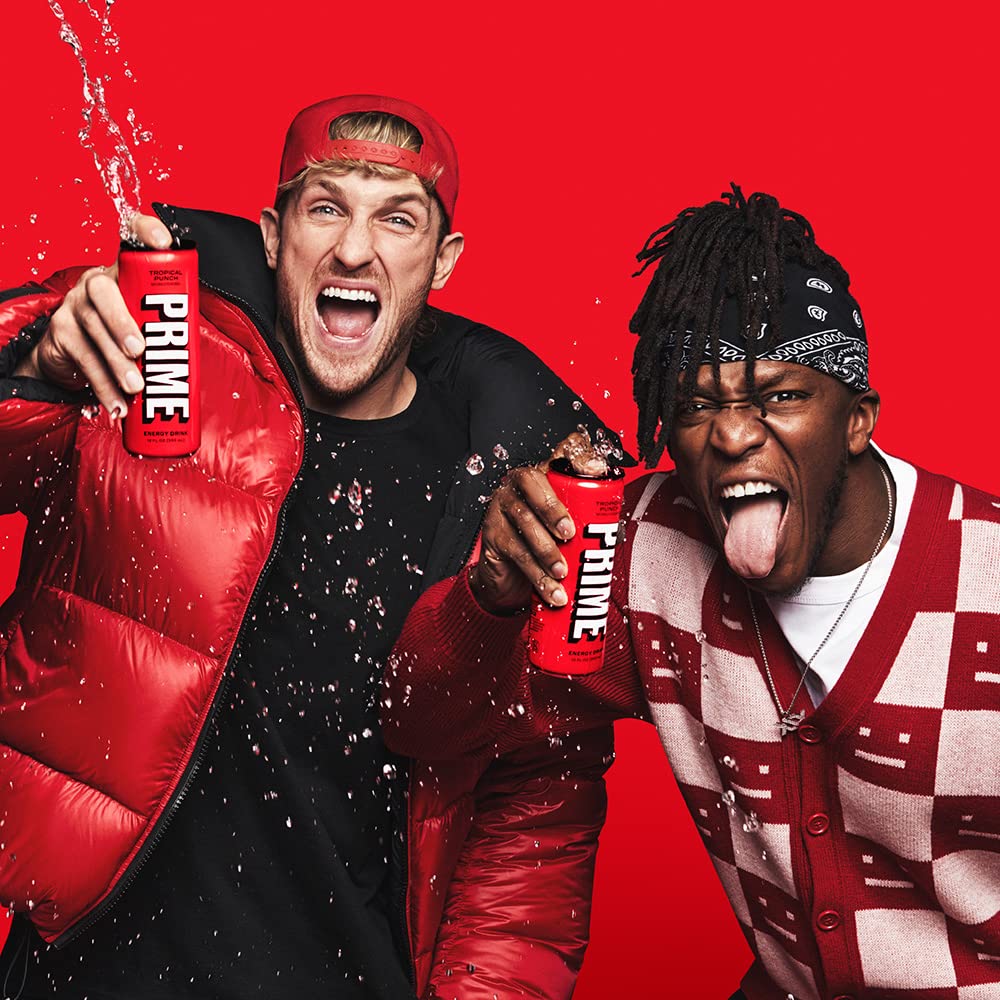
Energy drinks have evolved from niche products to mainstream beverages, offering consumers a convenient way to boost energy levels and support active lifestyles. Whether it’s the pioneering spirit of Red Bull, the daring flavors of Monster Energy, the vibrant appeal of V Energy, or the edgy persona of Rockstar Energy, each brand brings its own unique blend of ingredients, marketing savvy, and consumer appeal to the global stage.
As the energy drink market continues to expand and innovate, fueled by changing consumer preferences, trends, and technological advancements, these brands will play a pivotal role in defining the industry’s future landscape. Whether you’re seeking an energy boost before a workout, a study session, or a busy day at work, there’s an energy drink out there marketed to exactly meet your needs and satisfy your taste buds.
